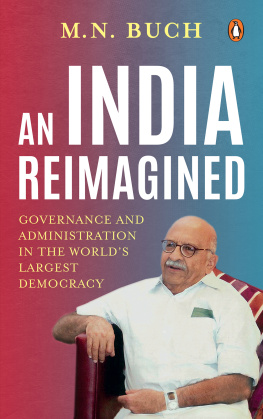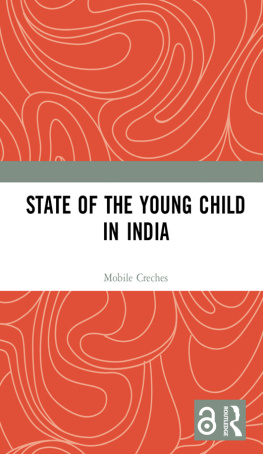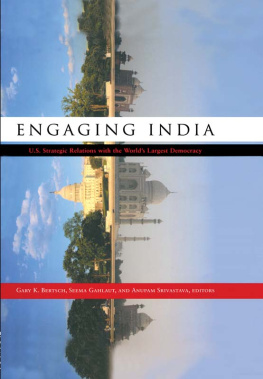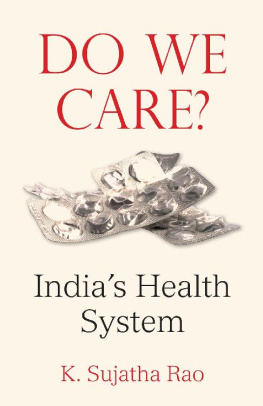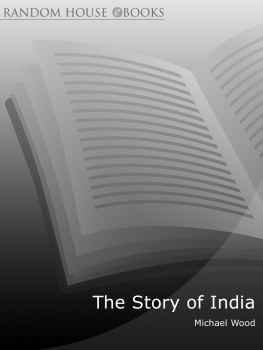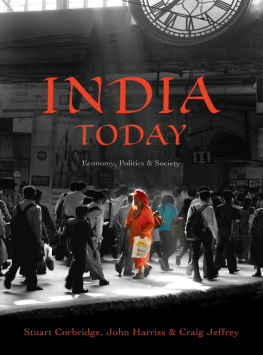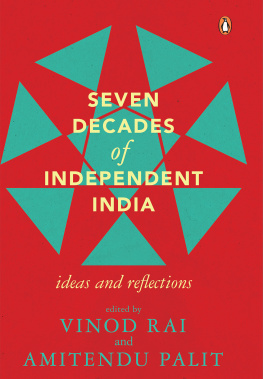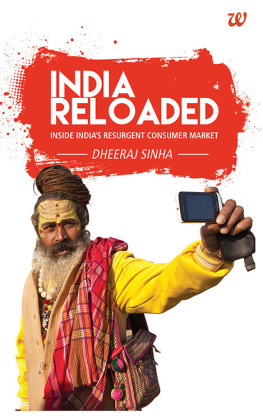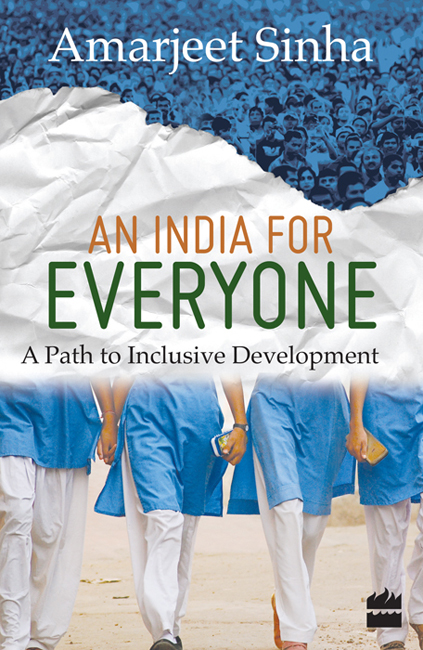
AN INDIA FOR
EVERYONE
A PATH TO INCLUSIVE DEVELOPMENT

AMARJEET SINHA

HarperCollins Publishers India
To my wife, Anita,
for being my best friend, always
Contents

List of Abbreviations
|
Reinventing India
|

Indias rise to pre-eminence over the last one-and-a-half decades has been on account of a sustained high rate of economic growth at a time when the developed world has started faltering. Recent fiscal deficits and economic crisis notwithstanding, it has made available more resources for a more inclusive development. Indias social development indicators, however, continue to dampen the spirit of India Shining. This book explores the possibility of reinventing India through an approach that makes social development the key criterion for inclusive growth along with social justice. It questions the widespread persistence of poverty and the inability of a large section of Indias young population to develop to its fullest potential. This book argues that for reinventing India there is a need to revisit public systems and invest in crafting them credibly. While there is a case for partnerships with the non-governmental sector, it argues that social development ultimately requires public systems that deliver quality services.
The book emphasizes the point that in our country we are not doing enough to strengthen public systems. Many public policy leaders are despairing about crafting credible public systems. This comes from a misplaced post-1991 analogy where private is seen as delivering and public is seen as failing. It misses the point that economic growth and social development require very different strategies, and that for social development there is no running away from investing in a better public system. For social development is about the pursuit of equity and equality for all by ensuring opportunities for good health, education, livelihood, water, sanitation, housing, food security, and an amiable, enabling environment for even the last man in the linethe Gandhian talisman of good governance!
This book strongly questions the assumption that neo-liberal policies that promoted economic growth will automatically secure entitlements to human development. The transformation of Indias red lands, the central Indian tribal region, calls for the pursuit of social development with strengthened public systems. Neither private provision through public funds nor publicprivate partnerships is necessarily the answer to inclusive growth. The book also questions the viability of mere cash transfers in human development sectors without attending to the supply side or the provision of services. While erstwhile communist/Soviet bloc nations may have changed their policies, there is a need to understand how these nations pursued social development over a shorter period of time much more effectively. The role of the state in securing basic social development entitlements needs better appreciation. The democratic polity of the country has to realize the urgency of crafting credible public systems in a transparent and accountable way, if social inclusion and human development is the goal.
The book explores various ways in which public systems can be made to deliver quality services. It makes a case for investing in the professionalizing of Indias essentially regulatory public administration and turning it into a genuine instrument for securing peoples human development entitlements. Social development requires credible public systems that are answerable to local communities, as that is the only way of reaching households of the poor to secure their entitlements in a country where over a billion people live across a million hamlets, villages, towns and cities. The global evidence clearly points to the role of a credible public system to secure social development.
This book laments the lack of prioritizing of public management skills to the understanding of leadership and motivation in public systems, or to reforms in public recruitments that could make failing public systems reinvent themselves. The book is not a defence of failing and outcome-less public systems; it makes a strong case for reinventing them by building institutions and introducing skills that are able to ensure high motivation, professionalism, outcome orientation, community monitoring, and a quest for eternal excellence. Some have doubts that democratic institutions and political and bureaucratic leadership can ever allow for an outcome- and quality-oriented public system. The power of a democracy ultimately lies in its ability to make the elected leadership pursue policies and programmes that secure entitlements for the electorate. It is true that the processes take time and are often mired in corruption. But then, other than enlightened democratic politics and a deepening of democratic institutions, there is no guarantee for sustainable well-being of the people. The deepening of democracy is an opportunity for revisiting public systems in a more accountable and citizen-centric frame. Reinventing India is about making people count; it is about securing entitlements to social development to make India truly inclusive.
For a nation with a large youth population such as India, the only way to pursue inclusive development and social justice is by providing social opportunities to every Indian to develop to his or her fullest potential. This will only be possible by ensuring that every Indian has access to health, nutrition, education, skill development and livelihood in a manner that the poor regions of the country will transform from being pools of unskilled labour to regions of diverse skills and knowledge.
Reinventing India is about getting away from the hierarchies of access in all walks of life; it is about an approach to development that views the well-being of the people as the only norm of good governance. It is an approach that necessarily bridges social and gender gaps by the pursuit of policies that provide equal opportunities to all. At a time when public resources are available and decentralized democratic institutions are getting deeper, the case for reinventing India as a truly inclusive society that makes public systems deliver quality services is stronger than everlet Indias elite not fail its people by imposing markets where public systems are the answer. Even sustaining high rates of economic growth needs social development with equity, where most could develop their human potential to the fullest to maximize production and earn incomes that generate higher market demand for goods and services. What is good for human well-being will also be good for economic growth.

| AGCA | Advisory Group on Community Action |
| ANM | Auxiliary Nurse Midwife |
| ASC | Arjun Sengupta Committee |
| ASER | Annual Status of Education Report |
| ASHA | Accredited Social Health Activist |
| BCC | Behaviour Change Communication |
| BDO | Block Development Office |
| BEP | Bihar Education Project |
| BPL | Below Poverty Line |
| BRC | Block Resource Centre |
Next page

